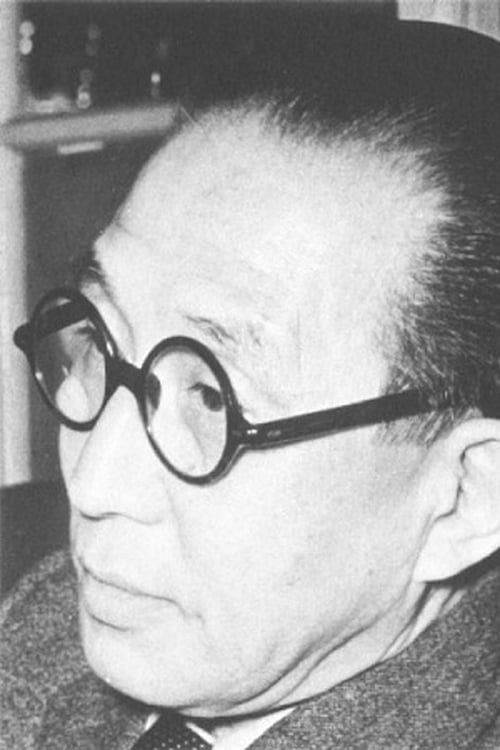Teinosuke Kinugasa
출생 : 1896-01-01, Kameyama, Mie Prefecture, Japan
사망 : 1982-02-26
약력
Teinosuke Kinugasa (衣笠 貞之助 Kinugasa Teinosuke) (1 January 1896 – 26 February 1982) was a Japanese actor and film director. He was born in Kameyama, Mie Prefecture and died in Kyoto. Kinugasa won the 1954 Palme d'or at Cannes for Jigokumon (The Gate of Hell).
Kinugasa was among the pioneers of Japanese film, but began his career as an actor specializing in female roles (onnagata) at the Nikkatsu studio. When Japanese cinema began using actresses in the early 1920s, he switched to directing and worked for such producers as Shozo Makino before going independent to make his best known film, A Page of Madness (1926).
On February 26, 1982, Kinugasa died at the age of 86.
Description above from the Wikipedia article Teinosuke Kinugasa, licensed under CC-BY-SA, full list of contributors on Wikipedia.
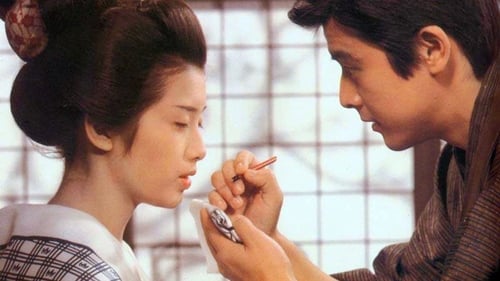
Screenplay
Okoto is blind since childhood. Her young servant Sasuke is in love of her. One day Koto is badly scarred on her face. In order to preserve the memory of her once beautiful face, Sasuke takes away his own sight.

Director
During a Soviet circus tour in Japan, a small street musician, Ken, meets a clown, Yuri Nikulin. Upon learning that his sick father is being treated in the Soviet Union, Ken sets off in search of him. The friendship of the great clown and the boy continues in Moscow.

Screenplay
Yoso is truly a lost classic, set in the Nara Era (710-794), from Kinugasa Teinosuke the same writer/director who gave us the recognized classic Gate of Hell (Jigokumon, 1952) & the milestone silent surrealist masterpiece A Page of Madness (Kurutta Ippeji, 1926).

Director
Yoso is truly a lost classic, set in the Nara Era (710-794), from Kinugasa Teinosuke the same writer/director who gave us the recognized classic Gate of Hell (Jigokumon, 1952) & the milestone silent surrealist masterpiece A Page of Madness (Kurutta Ippeji, 1926).

Director
Three stories about the relationship between men and women: "Playgirl" (Masumura/Shirasaka), "Company No. 2" (Yoshimura/Kasahara), and "San Nyotai" (Kinugasa/Shindô).
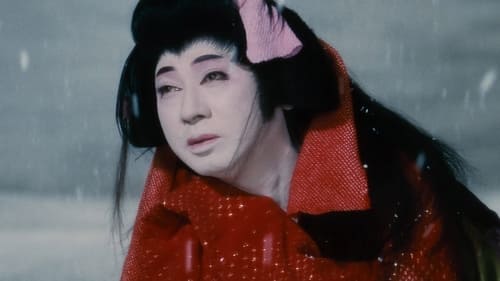
Screenplay
While performing in a touring kabuki troupe, leading female impersonator Yukinojo comes across the three men who drove his parents to suicide twenty years earlier, and plans his revenge, firstly by seducing the daughter of one of them, secondly by ruining them...

Screenplay
Shinjiro is a rambler, a single sword carrying lone wolf with only his fighting skills to protect him. He doesn’t know where his road leads, only that he must find his lost sister, and the ronin who stole her away. The ronin that Shinjiro has sworn to kill. On the road he’ll find his sister and test his blade against his bitter enemy. He also encounters a lost boy searching for his father, a boy he will swear to protect, and find his own lost love, a daughter of the yakuza who draws him into a frenzied and bloody battle between rival yakuza gangs for the control of a frightened town.

Director
One of Kinugasa's last films--based on the story by Tanizaki Jun'ichirō.

Screenplay
Disguised as a beggar monk, Ryunosuke is harassed along the road by the rowdy members of a country dojo or fencing school malingering outside their fencing hall. The third film in the Satan's Sword trilogy.

Writer
Late romance by acclaimed filmmaker Kinugasa Teinosuke.

Director
Late romance by acclaimed filmmaker Kinugasa Teinosuke.
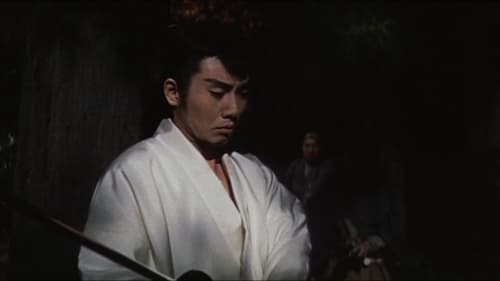
Screenplay
The sequel to Daibosatsu tôge (1960) and the second of the trilogy follows the adventures of Ryunosuke Tsukue after he is blinded.
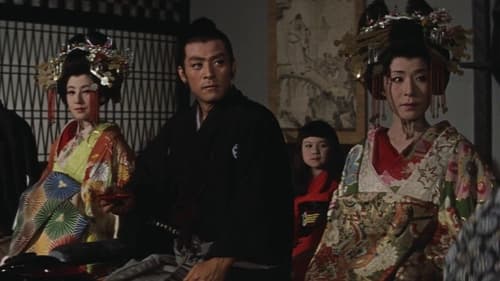
Screenplay
The Dai-bosatsu toge trilogy is based on Kaizan Nakazatos unfinished long series of novels (41 books, written from 1913 to 1941). Set in the last period of the Tokugawa Shogunate, Daibosatsu Toge tells the story of Tsuke Ryunosuke, a nihilistic swordmaster who doesn't hesitate to kill anyone, bad or good.
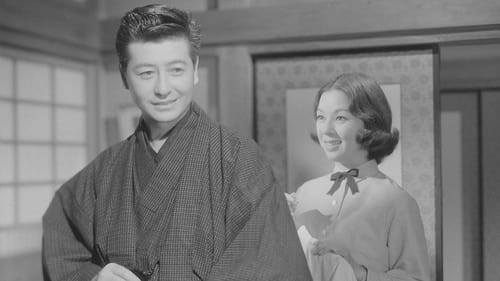
Screenplay
Ko Tanomura, who was ordered to study abroad in the United States for two years as a youth executive at Haneda Airport and a royal industry, was looking for the appearance of Sako Ozegawa from a large number of see-offs. --Kou's father, Cheongju, is an authority on religious studies, and Orie is his third wife. Eiko, who is a distant relative of Orie, came to Tokyo to care for her sick. Two months ago, Ko, who first met Eiko, was deeply moved...

Screenplay
Set in the middle of the Edo period (1603-1867), this tragic love story takes its cue from a celebrated historical case tried by magistrate Tadasuke Ooka, whose shrewd legal decisions became the stuff of legend. Okuma Shirokoya, the daughter of a lumber merchant in Edo (today’s Tokyo), embarked on an affair and was executed after conspiring with her maid to murder her husband. (Source: https://festival.ilcinemaritrovato.it/en/proiezione/shirokoya-komako/)

Screenplay
때는 메이지 시대, 노가쿠(能樂) 극단의 키타하치는 스스로가 재주가 뛰어나다 생각하여 오만한 행동을 일삼는다. 키타하치는 스승의 재주를 모욕하고, 스승은 그로 인해 우물에 몸을 던진다. 극단으로부터 파문당한 키타하치는 참회와 방랑의 세월을 보내던 중 운명의 여인을 만나게 된다. 그 여인은 바로 키타하치로 인해 자살한 스승의 딸이다.

Director
때는 메이지 시대, 노가쿠(能樂) 극단의 키타하치는 스스로가 재주가 뛰어나다 생각하여 오만한 행동을 일삼는다. 키타하치는 스승의 재주를 모욕하고, 스승은 그로 인해 우물에 몸을 던진다. 극단으로부터 파문당한 키타하치는 참회와 방랑의 세월을 보내던 중 운명의 여인을 만나게 된다. 그 여인은 바로 키타하치로 인해 자살한 스승의 딸이다.

Writer

Director

Screenplay
The story follows Oshino, a geisha who is trying to start a new life with a lover who is a painter. However, her past filled with debts and pimps catches up to her.

Director
The story follows Oshino, a geisha who is trying to start a new life with a lover who is a painter. However, her past filled with debts and pimps catches up to her.
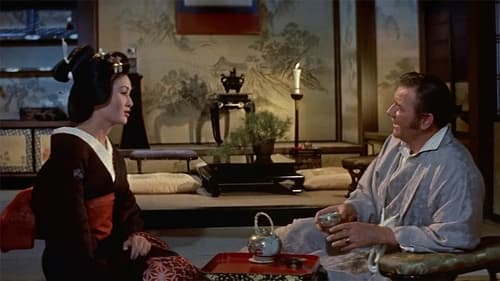
Script Supervisor
Townsend Harris is sent by President Pierce to Japan to serve as the first U.S. Consul-General to that country. Harris discovers enormous hostility to foreigners, as well as the love of a young geisha.
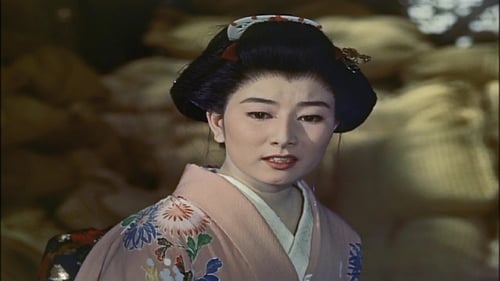
Screenplay
일본의 국민적 역사소설가 요시카와 에이지의 연재 소설을 영화화

Director
일본의 국민적 역사소설가 요시카와 에이지의 연재 소설을 영화화

Writer

Screenplay
Floating Vessel (源氏物語 浮舟 , Ukifune) is a 1957 color Japanese film directed by Teinosuke Kinugasa. Drawn from parts of the famous Genji monogatari by Lady Murasaki.

Director
Floating Vessel (源氏物語 浮舟 , Ukifune) is a 1957 color Japanese film directed by Teinosuke Kinugasa. Drawn from parts of the famous Genji monogatari by Lady Murasaki.
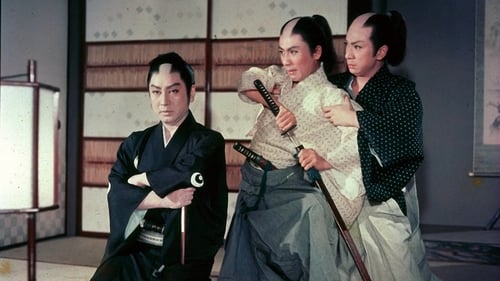
Screenplay
During the bloody era of the Tokugawa Shogunate collapse, a man appeared capable of overthrowing a corrupt government and ending the feud between the Choshu and Satsuma clans. This is the story of Tsukigat Khanpayit, the sword maker of the Choshu clan, who, along with Katsuro Kogoro and Sakamoto Ryoma, sought to fulfill the dream of a new peaceful era in Japan. Can he realize his ideals or will he die in the chaos of internecine fights...

Director
During the bloody era of the Tokugawa Shogunate collapse, a man appeared capable of overthrowing a corrupt government and ending the feud between the Choshu and Satsuma clans. This is the story of Tsukigat Khanpayit, the sword maker of the Choshu clan, who, along with Katsuro Kogoro and Sakamoto Ryoma, sought to fulfill the dream of a new peaceful era in Japan. Can he realize his ideals or will he die in the chaos of internecine fights...

Writer

Screenplay
The story of Yoshinaka during the tumultuous period of warring related to us in the Heike Monogatari. Close in setting to Kinugasa’s famous Gate of Hell (1953).

Director
The story of Yoshinaka during the tumultuous period of warring related to us in the Heike Monogatari. Close in setting to Kinugasa’s famous Gate of Hell (1953).

Writer

Screenplay
Hayase, a schoolteacher, assists Sakai in editing a German-Japanese dictionary. Hayase owes much to Sakai, as Sakai raised him for 13 years after Hayase lost his parents in a war. Hayase has been secretly married to Otsuta, a former geisha, and has been unable to tell Sakai of the marriage, aware as he is that Sakai wants him to marry his daughter, Taeko. Otsuta wants Hayase to tell Sakai about her, but understands the difficulty of his position. At a festival, Otsuta is mistaken for a pickpocket and taken to the police. Because of her background as a geisha, newspaper reporters eagerly delve into her past and report that she has been married to Hayase. Unaware of what has been printed in the papers, Hayase decides to tell Sakai about his marriage. Sakai shows the newspaper to him and orders Hayase to part with Otsuta. Given no chance to explain, Hayase accepts Sakai's order.

Director
Hayase, a schoolteacher, assists Sakai in editing a German-Japanese dictionary. Hayase owes much to Sakai, as Sakai raised him for 13 years after Hayase lost his parents in a war. Hayase has been secretly married to Otsuta, a former geisha, and has been unable to tell Sakai of the marriage, aware as he is that Sakai wants him to marry his daughter, Taeko. Otsuta wants Hayase to tell Sakai about her, but understands the difficulty of his position. At a festival, Otsuta is mistaken for a pickpocket and taken to the police. Because of her background as a geisha, newspaper reporters eagerly delve into her past and report that she has been married to Hayase. Unaware of what has been printed in the papers, Hayase decides to tell Sakai about his marriage. Sakai shows the newspaper to him and orders Hayase to part with Otsuta. Given no chance to explain, Hayase accepts Sakai's order.

Director
A Girl isn't Allowed to Love is a 1955 Japanese film directed by Teinosuke Kinugasa.

Writer

Screenplay
A Japanese drama featuring the one-eyed, one-armed swordsman
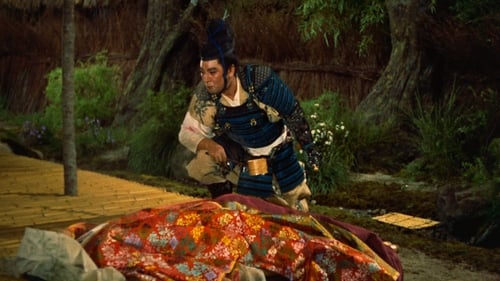
Screenplay
12세기 에도 시대, 곳곳에서 반란이 일어나고 혼란과 공포가 교토를 뒤덮는다. 교토의 산조성 또한 공격을 당하고, 왕족인 키사는 젊은 사무라이 모리토에게 구출된다. 이때의 인연을 시작으로 모리토는 그녀를 사랑하게 되지만 키사는 벌써 모리토 보다 계급이 높은 사무라이 남편이 있는 몸이다. 모리토는 충성스러운 사무라이지만 그녀를 향한 사랑 때문에 결국 이성을 잃게 되고 키사의 고모까지 인질로 잡으면서 키사를 자기 것으로 만들려고 한다. 일본에서 처음으로 이스트만 컬러를 사용한 작품으로, 화려한 색감과 의상으로 한 순간도 눈을 떼지 못하게 만든다. 기쿠치 칸의 역사극을 영화화했으며, 1954년 칸 영화제 그랑프리를 수상했다.

Director
12세기 에도 시대, 곳곳에서 반란이 일어나고 혼란과 공포가 교토를 뒤덮는다. 교토의 산조성 또한 공격을 당하고, 왕족인 키사는 젊은 사무라이 모리토에게 구출된다. 이때의 인연을 시작으로 모리토는 그녀를 사랑하게 되지만 키사는 벌써 모리토 보다 계급이 높은 사무라이 남편이 있는 몸이다. 모리토는 충성스러운 사무라이지만 그녀를 향한 사랑 때문에 결국 이성을 잃게 되고 키사의 고모까지 인질로 잡으면서 키사를 자기 것으로 만들려고 한다. 일본에서 처음으로 이스트만 컬러를 사용한 작품으로, 화려한 색감과 의상으로 한 순간도 눈을 떼지 못하게 만든다. 기쿠치 칸의 역사극을 영화화했으며, 1954년 칸 영화제 그랑프리를 수상했다.

Screenplay
Dedication of the Great Buddha is a 1952 Japanese film directed by Teinosuke Kinugasa. It was entered into the 1953 Cannes Film Festival.

Director
Dedication of the Great Buddha is a 1952 Japanese film directed by Teinosuke Kinugasa. It was entered into the 1953 Cannes Film Festival.

Writer

Director
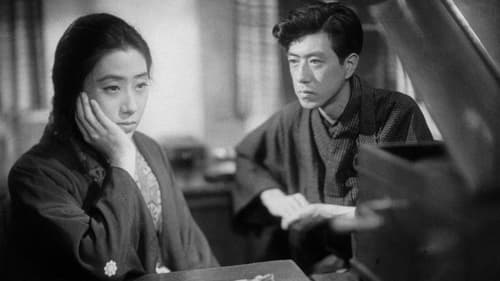
Writer
Sumako, a country girl, becomes a great actress with the help of Hogetsu,a scholar who brought some of European realism to the Japan's stage. The relationship leads to the end of his marriage and the breakup of his Arts Society. This is another version of Kenji Mizoguchi's film "The Love of Sumako the Actress" ("Joyû Sumako no koi"), from the same year. Both tells the story of the famous actress Sumako Mitsui (1886-1919), considered the first great modern theater actress in Japan. Mizoguchi himself is said to have preferred Kinugasa's version.

Director
Sumako, a country girl, becomes a great actress with the help of Hogetsu,a scholar who brought some of European realism to the Japan's stage. The relationship leads to the end of his marriage and the breakup of his Arts Society. This is another version of Kenji Mizoguchi's film "The Love of Sumako the Actress" ("Joyû Sumako no koi"), from the same year. Both tells the story of the famous actress Sumako Mitsui (1886-1919), considered the first great modern theater actress in Japan. Mizoguchi himself is said to have preferred Kinugasa's version.

Director
Omnibus of love stories from 1947 directed by famous directors, featuring big stars.

Director
Lord for a Night is a 1946 Japanese film directed by Teinosuke Kinugasa.

Writer
This epic depicts the battle between Uesugi Kenshin and Takeda Shingen. The focus of the story is the struggle by the unit leader in charge of the main supply wagons and the supply troops to transport materiel to the Uesugi army. To this are added episodes involving an itinerant woman.

Director
This epic depicts the battle between Uesugi Kenshin and Takeda Shingen. The focus of the story is the struggle by the unit leader in charge of the main supply wagons and the supply troops to transport materiel to the Uesugi army. To this are added episodes involving an itinerant woman.

Screenplay

Director

Screenplay
When Sentarô’s father is killed by a drunken samurai, Sentarô avenges him. His deed puts him on the run and leaves his sister behind. While running from both the authorities and the assassins, Sentarô meets with the beautiful travelling-actress Oshima who takes him under her protection.

Director
When Sentarô’s father is killed by a drunken samurai, Sentarô avenges him. His deed puts him on the run and leaves his sister behind. While running from both the authorities and the assassins, Sentarô meets with the beautiful travelling-actress Oshima who takes him under her protection.

Screenplay
The Siege of Osaka

Director
The Siege of Osaka

Screenplay
dir: Teinosuke Kinugasa

Director
dir: Teinosuke Kinugasa

Writer
An onnagata (female impersonator) of a Kabuki troupe avenges his parents' deaths. Remade in 1963 as Yukinojô Henge.

Director
An onnagata (female impersonator) of a Kabuki troupe avenges his parents' deaths. Remade in 1963 as Yukinojô Henge.

Screenplay
Period film from 1934.

Director
Period film from 1934.

Writer
The first half of the movie depicts a man's jealousy of his best friend and the woman he love. The second part depicts a hero who is ready to put the past behind him and risk his life for his friend.

Director
The first half of the movie depicts a man's jealousy of his best friend and the woman he love. The second part depicts a hero who is ready to put the past behind him and risk his life for his friend.

Screenplay
A mournful masterpiece by Kinugasa Teinosuke

Director
A mournful masterpiece by Kinugasa Teinosuke

Screenplay

Director

Screenplay
This 1932 adaptation is the earliest sound version of the ever-popular and much-filmed Chushingura story of the loyal 47 retainers who avenged their feudal lord after he was obliged to commit hara-kiri due to the machinations of a villainous courtier. As the first sound version of the classic narrative, the film was something of an event, and employed a stellar cast, who give a roster of memorable performances. Director Teinosuke Kinugasa was primarily a specialist in jidai-geki (period films), such as the internationally celebrated Gate of Hell (Jigokumon, 1953), and although he is now most famous as the maker of the avant-garde silent films A Page of Madness (Kurutta ichipeji, 1926) and Crossroads (Jujiro, 1928), Chushingura is in fact more typical of his output than those experimental works. The film ranked third in that year’s Kinema Junpo critics’ poll, and Joseph Anderson and Donald Richie noted that 'not only the sound but the quick cutting was admired by many critics.

Director
This 1932 adaptation is the earliest sound version of the ever-popular and much-filmed Chushingura story of the loyal 47 retainers who avenged their feudal lord after he was obliged to commit hara-kiri due to the machinations of a villainous courtier. As the first sound version of the classic narrative, the film was something of an event, and employed a stellar cast, who give a roster of memorable performances. Director Teinosuke Kinugasa was primarily a specialist in jidai-geki (period films), such as the internationally celebrated Gate of Hell (Jigokumon, 1953), and although he is now most famous as the maker of the avant-garde silent films A Page of Madness (Kurutta ichipeji, 1926) and Crossroads (Jujiro, 1928), Chushingura is in fact more typical of his output than those experimental works. The film ranked third in that year’s Kinema Junpo critics’ poll, and Joseph Anderson and Donald Richie noted that 'not only the sound but the quick cutting was admired by many critics.

Director
In the age of priests and warriors which the film denounces, a woman revolts after she is sold as a prostitute.

Writer
Rikiya is blinded in a fight after falling in love with a courtesan. Believing the blindness permanent and his opponent dead, he goes back home to his sister Okiku, who become a prostitute to pay for his treatment.

Director
Rikiya is blinded in a fight after falling in love with a courtesan. Believing the blindness permanent and his opponent dead, he goes back home to his sister Okiku, who become a prostitute to pay for his treatment.

Director
First film adaptation of the kabuki play Benten Kozo, about a thief who steals from the rich and gives to the poor...
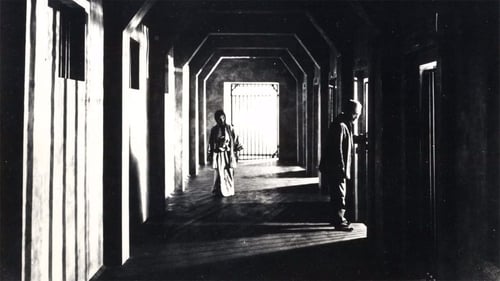
Producer
선원이었던 늙은 남자는 미친 부인의 곁에 있기 위해서 그녀가 갇힌 병원에 자신의 정체를 숨긴 채 관리인으로 취직한다. 남편은 아내가 그들의 아이를 익사시키고 자신도 자살시도를 했다고 기억한다. 그러나 어느 날 그들의 딸이 자신이 아버지와 했던 약속에 관해 이야기하기 위해 병원으로 엄마를 찾아온다.

Writer
선원이었던 늙은 남자는 미친 부인의 곁에 있기 위해서 그녀가 갇힌 병원에 자신의 정체를 숨긴 채 관리인으로 취직한다. 남편은 아내가 그들의 아이를 익사시키고 자신도 자살시도를 했다고 기억한다. 그러나 어느 날 그들의 딸이 자신이 아버지와 했던 약속에 관해 이야기하기 위해 병원으로 엄마를 찾아온다.

Director
선원이었던 늙은 남자는 미친 부인의 곁에 있기 위해서 그녀가 갇힌 병원에 자신의 정체를 숨긴 채 관리인으로 취직한다. 남편은 아내가 그들의 아이를 익사시키고 자신도 자살시도를 했다고 기억한다. 그러나 어느 날 그들의 딸이 자신이 아버지와 했던 약속에 관해 이야기하기 위해 병원으로 엄마를 찾아온다.

Director
Directed by Teinosuke Kinugasa.

Director

A film adaptation of the play by Leo Tolstoy.
